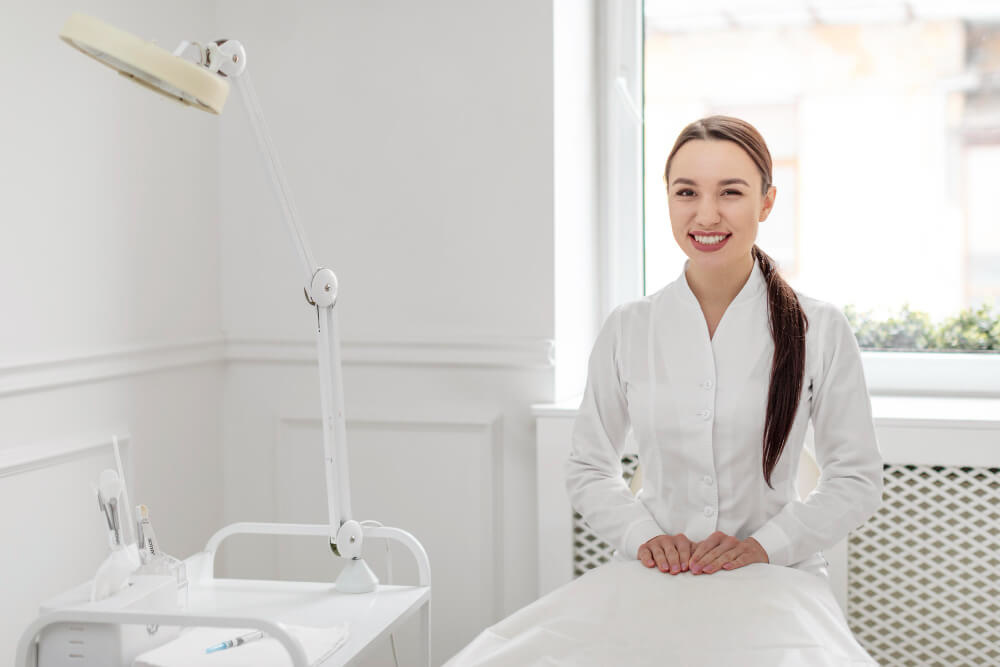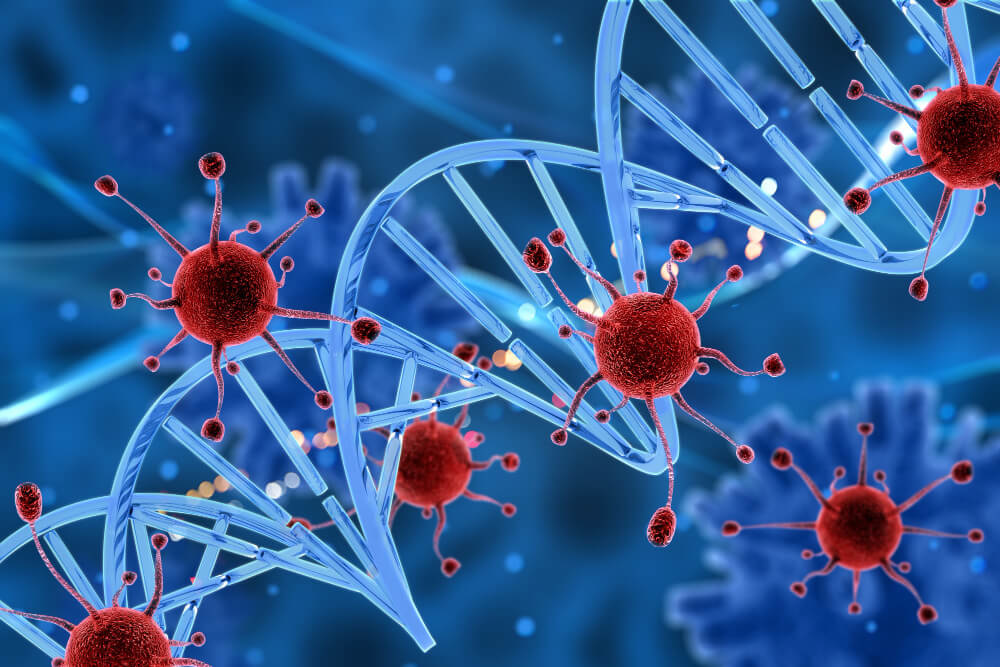The Ultimate Guide to Menopause Training: Empowering Your Body and Mind
Menopause is not a final chapter; it is a significant transition, a powerful pivot in a woman’s life. For too long, this natural biological process has been shrouded in silence or discussed only in hushed tones, associated with an inevitable decline. But a new perspective is emerging, one that views menopause as an opportunity for profound self-care, renewal, and empowerment. This shift begins with understanding the power of proactive management and preparation.
The concept of ‘training’ for menopause is twofold. It involves physically preparing and conditioning your body to navigate the changes ahead with strength and resilience. It also involves a deeper, more informed approach from the healthcare professionals who guide women through this journey. True empowerment comes from having access to both personal strategies and expert, nuanced medical care, which is why comprehensive menopause training is becoming an essential cornerstone of modern wellness and longevity medicine.
This guide will explore both facets of menopause training. We will delve into the specific physical activities that can transform your experience, mitigating symptoms and building a foundation of health for the decades to come. We will also illuminate why specialized clinical expertise is non-negotiable for receiving the best possible care, ensuring this transition is managed with the sophistication and respect it deserves.

Why Does Exercise Matter So Much During Menopause?
As your body navigates the hormonal shifts of perimenopause and menopause, you might notice changes that feel unfamiliar or challenging. The decline in estrogen has a systemic effect, influencing everything from your bones and muscles to your metabolism and mood. This is precisely why exercise transitions from a ‘good idea’ to an essential daily practice.
Physical activity acts as a powerful counterbalance to many of these changes. It helps preserve lean muscle mass, which naturally diminishes with age and hormonal shifts, a condition known as sarcopenia. Since muscle is metabolically active, maintaining it helps keep your metabolism from slowing down, making weight management more achievable. It’s a fundamental tool for taking control of your long-term health.
Furthermore, the benefits extend far beyond the physical. Regular movement is a proven mood booster, helping to alleviate the anxiety or low moods that can accompany this phase. It can also significantly improve sleep quality and even reduce the frequency and intensity of hot flashes for many women. In essence, exercise is one of the most effective, non-pharmaceutical tools you have to actively manage your symptoms and well-being.

What Are the Best Types of Exercise for Menopause?
There is no single ‘magic’ exercise for menopause. Instead, the most effective approach is a well-rounded routine that incorporates three key pillars: strength training, cardiovascular activity, and exercises that enhance flexibility and balance. This combination addresses the primary physiological challenges of menopause, creating a robust framework for health.
A varied routine not only delivers comprehensive benefits but also helps prevent boredom and overuse injuries. The goal is to build a sustainable practice that you enjoy and can stick with for the long run. Think of it not as a chore, but as a daily investment in your future self, ensuring you remain strong, vibrant, and active for years to come.

Should I Focus on Strength Training?
Yes, absolutely. If you were to choose only one form of exercise during menopause, strength training would be the most critical. As estrogen levels fall, so does your body’s ability to maintain bone density, putting you at a higher risk for osteopenia and osteoporosis. Resistance training places mechanical stress on your bones, which signals the body to build them back stronger.
This type of exercise involves working your muscles against some form of resistance. This could be dumbbells, kettlebells, resistance bands, weight machines at a gym, or even your own body weight through exercises like squats, push-ups, and lunges. Building muscle does more than protect your skeleton; it fires up your metabolism, helping you burn more calories even at rest.
Aim for at least two to three strength training sessions per week, focusing on all major muscle groups. You do not need to become a bodybuilder; the key is consistency and progressive overload, which simply means gradually increasing the challenge over time. For women looking to fit this into a packed schedule, an exercise toolkit for busy women can provide practical strategies and efficient workout plans.

How Important is Cardiovascular Exercise?
Cardiovascular or ‘aerobic’ exercise is vitally important for protecting your heart. The loss of estrogen’s protective effects can lead to an increase in cardiovascular risk factors, such as higher LDL cholesterol and blood pressure. Regular cardio helps keep your heart and blood vessels healthy, improves circulation, and is a fantastic tool for managing weight.
Beyond heart health, aerobic exercise is a champion for mental well-being. It releases endorphins, those ‘feel-good’ chemicals in the brain that can elevate your mood, reduce stress, and combat feelings of anxiety. A brisk walk, a bike ride, a dance class, or swimming can also be incredibly effective at improving sleep quality and may help reduce the severity of hot flashes.
Try to incorporate at least 150 minutes of moderate-intensity cardio each week, as recommended by most health organizations. This could be broken down into 30 minutes, five days a week. The NHS guidance on exercise provides excellent, straightforward advice on how to get started and stay motivated with your cardiovascular fitness during this life stage.

What About Flexibility and Balance?
Flexibility and balance are the often-overlooked heroes of a menopausal fitness plan. As we age, muscles and connective tissues can become tighter, leading to stiffness, aches, and a reduced range of motion. Activities like yoga, Pilates, and regular stretching help maintain suppleness, keeping you mobile and comfortable in your own body.
Balance training is equally crucial. It strengthens the small stabilizing muscles around your joints and improves your proprioception, which is your body’s awareness of its position in space. This drastically reduces the risk of falls, which can lead to serious fractures in the context of lower bone density. Simple exercises like standing on one leg or practicing tai chi can make a world of difference.
Integrating these practices into your week provides a holistic approach to physical wellness. Many resources outline the best exercises to do during menopause often highlighting the synergistic benefits of combining strength, cardio, and flexibility work for optimal results.

How Can I Create a Sustainable Menopause Exercise Plan?
Starting a new exercise routine can feel daunting, but the key to success is sustainability, not perfection. The all-or-nothing approach often leads to burnout. Instead, focus on building small, consistent habits that you can maintain over the long term. Start with shorter, less intense workouts and gradually increase the duration and difficulty as you get stronger.
Listen to your body. Some days you will feel energetic and strong, while on other days, fatigue might be a real factor. It is okay to opt for a gentle walk or stretching session instead of a high-intensity workout. The goal is to move your body in some way every day. Honoring your body’s signals is a crucial part of a healthy relationship with exercise.
Finally, find activities you genuinely enjoy. If you dread going to the gym, try a dance class, hiking, or swimming instead. Exercising with a friend can also provide motivation and accountability. For more guidance, many health platforms offer practical exercise tips for menopause that can help you overcome common hurdles and build a routine that truly works for you.

Why is Specialized Menopause Knowledge So Crucial for Healthcare Professionals?
While personal exercise is a powerful tool for managing menopause, it is only one piece of the puzzle. The quality of medical guidance a woman receives during this time is paramount. Unfortunately, menopause has historically been a subject that receives minimal attention in standard medical school curricula, leaving many well-intentioned doctors ill-equipped to provide comprehensive care.
This knowledge gap can lead to frustrating experiences for patients. Symptoms like anxiety, heart palpitations, joint pain, or brain fog may be dismissed as signs of aging or stress, or treated in isolation without connecting them to the underlying hormonal shifts of perimenopause and menopause. Women may be passed from one specialist to another, never receiving a holistic diagnosis or a cohesive treatment plan.
This is why a new standard of care is so desperately needed. It requires clinicians to move beyond a surface-level understanding and engage in dedicated training. They must learn to recognize the wide-ranging and often subtle symptoms, understand the nuances of hormone testing and replacement therapy, and appreciate the interconnectedness of a woman’s physical, mental, and emotional health during this transition.

What Does Advanced Menopause Training for Doctors Involve?
Advanced training in menopause care goes far beyond a basic refresher on hormone replacement therapy. It embraces the principles of functional and regenerative medicine, which seek to understand and address the root causes of symptoms rather than just masking them. This approach is personalized, patient-centered, and proactive.
Clinicians with this specialized knowledge learn to conduct comprehensive assessments that look at the bigger picture. This includes detailed hormone panels, nutrient status, thyroid function, inflammation markers, and gut health. They understand that menopause does not happen in a vacuum and that its effects are deeply intertwined with other bodily systems. This allows them to create truly individualized treatment plans that might include bioidentical hormones, targeted nutritional supplements, lifestyle modifications, and stress management techniques.
For practitioners dedicated to offering the highest level of care, the path often involves formal certification. Understanding how to become a certified menopause practitioner is the first step for clinicians who want to distinguish themselves as true experts in the field. This level of dedication ensures they are equipped with the latest research and most effective protocols to guide their patients toward optimal health and longevity.

How Should Perimenopause Be Handled in a Clinical Setting?
Perimenopause, the multi-year transition before menopause, is often the most confusing and symptomatic time for women. Hormone levels, particularly progesterone and estrogen, can fluctuate wildly, leading to an unpredictable array of symptoms like irregular periods, severe PMS, sleep disturbances, and mood swings. Managing this phase effectively requires a unique clinical skillset.
In a specialized clinical setting, the focus is on early recognition and proactive management. A trained practitioner will not dismiss a 42-year-old woman’s new-onset anxiety or insomnia. Instead, they will investigate the possibility of perimenopause through careful symptom analysis and appropriate hormonal testing, interpreting the results within the context of fluctuating cycles.
Effective strategies for managing perimenopause in a clinical setting involve a highly personalized approach. This may include the gentle introduction of bioidentical progesterone to stabilize moods and improve sleep, nutritional interventions to support hormone production, and stress-reduction techniques to soothe the nervous system. The goal is to smooth the transition, providing relief and stability long before a woman’s final menstrual period.

What is the Deeper Science Guiding Modern Menopause Care?
Leading-edge menopause care is grounded in a deep understanding of cellular biology and the aging process itself. One of the most important concepts in this field is cellular senescence. This is a process where cells, after a certain number of divisions or due to damage, stop dividing but do not die. Instead, they enter a ‘zombie-like’ state, releasing a cocktail of inflammatory signals that can damage surrounding healthy tissues.
The hormonal changes of menopause appear to accelerate the accumulation of these senescent cells throughout the body. This underlying cellular process is now thought to contribute to many of the conditions associated with post-menopause, including osteoporosis, cardiovascular disease, and cognitive decline. It is a key mechanism linking hormonal shifts to the broader aging process.
For clinicians, understanding the science of cellular senescence for doctors opens up new therapeutic possibilities. It informs the use of senolytic agents, compounds that can selectively clear out these harmful cells, and highlights the importance of lifestyle interventions like specific types of exercise and nutrition that can mitigate this process. This cellular-level understanding represents the future of menopause management, framing it as a critical window for promoting long-term health and longevity.
True mastery over the menopause transition comes from this powerful combination of personal action and expert guidance. By committing to a physical training routine that builds strength, resilience, and vitality, you take control of your well-being. By seeking out healthcare professionals who have invested in advanced training, you ensure you receive the sophisticated, personalized, and forward-thinking care you deserve. This dual approach transforms menopause from something to be endured into a period of intentional, powerful self-renewal.
Frequently Asked Questions

Why can’t a single blood test definitively diagnose perimenopause?
During perimenopause, your hormone levels, particularly follicle-stimulating hormone (FSH) and estrogen, do not decline in a steady, predictable manner. Instead, they can fluctuate wildly from day to day and week to week. A single blood test only provides a snapshot of one moment in time, which could easily show “normal” levels even when you are experiencing significant perimenopausal symptoms.
Because of this hormonal chaos, healthcare providers rely more on a clinical diagnosis based on your age, symptoms, and menstrual history. While a blood test might be used to rule out other conditions that mimic perimenopause, such as thyroid disorders, it is not considered the primary tool for confirming the transition itself. Your consistent pattern of symptoms provides a much more reliable diagnostic picture than a fluctuating hormone level.

If lab tests are unreliable, what is the best way to get a perimenopause diagnosis?
The most accurate way to receive a perimenopause diagnosis is through a comprehensive consultation with your healthcare provider. This diagnosis is primarily “clinical,” meaning it is based on your reported symptoms, age, and any changes in your menstrual cycle. Your doctor will listen to your experiences, such as the onset of hot flashes, sleep disturbances, mood swings, or vaginal dryness.
To prepare for your appointment and assist your doctor, consider keeping a symptom journal for one to two months beforehand. Tracking the frequency and intensity of your symptoms alongside your menstrual cycle provides concrete data that creates a clear and compelling clinical picture. This detailed personal record is often the most critical piece of evidence for a confident diagnosis.

Can I be in perimenopause even if my periods are still regular?
Yes, you can absolutely be in the early stages of perimenopause and still have regular menstrual cycles. The initial hormonal shifts are often subtle and may first manifest as non-menstrual symptoms like increased anxiety, trouble sleeping, new or worsening PMS, or a lower stress tolerance. These symptoms can appear months or even years before your period becomes noticeably irregular.
As the transition progresses, you will likely begin to see changes in your cycle, such as shorter or longer gaps between periods or differences in flow. However, the presence of other classic perimenopausal symptoms is significant, even with a regular cycle. This is why a diagnosis is based on the overall pattern of symptoms, not just the behavior of your period.
Discover the most comprehensive functional medicine training, longevity training, and biohacking certification programs designed specifically for healthcare professionals, medics, and clinic owners who want to master regenerative medicine protocols and anti-aging therapies. Elevate your practice and become a leader in menopause care and longevity with Talking Longevity.







